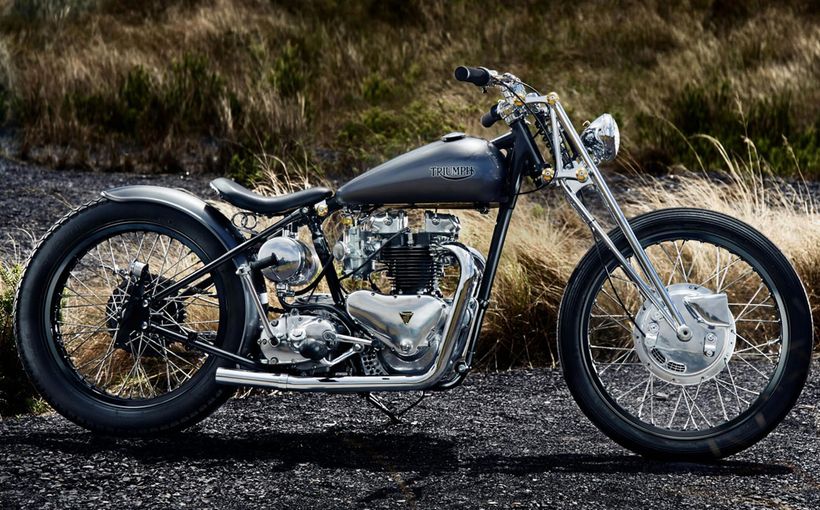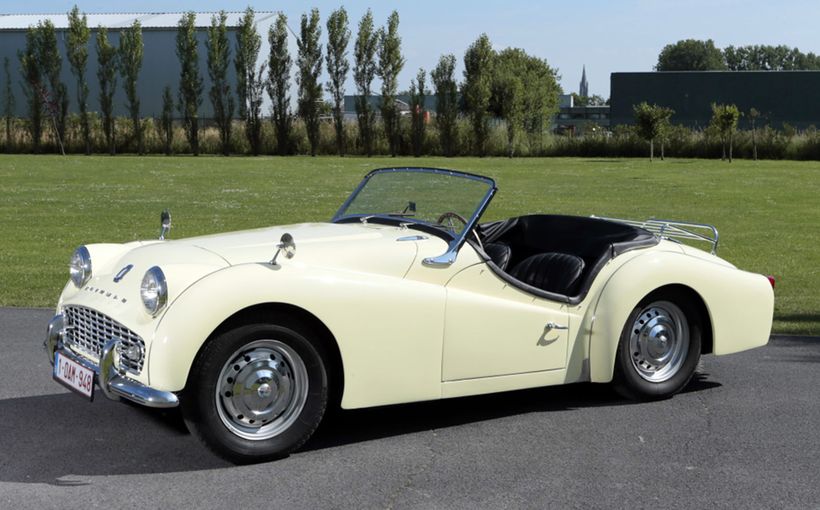Triumph Bonneville: Perhaps the most famous motorcycle ever

Many observers believe the Triumph Bonneville is the most famous motorcycle ever and it is certainly among the longest-running automotive sub-brands. Indeed, even the conjunction of the British company and American model name encapsulates this bike’s enduring international appeal. The original Bonneville arrived in 1959 (one season after Pontiac first applied it to a performance sedan, which was the pace car for that year’s Indianapolis 500).
The first two generations (1959-83, 1985-89) were manufactured in Meriden in the West Midlands and the third series in Hinckley, Leicestershire from 2001 with no hint of an end in sight.
The first Triumph motorcycle made its debut in 1902 and was little more than a bicycle with a Belgian Minerva engine. A humble beginning perhaps, but it paved the way for its manufacturer to become a major supplier to the ministry of defence during World War One (1914-1918), from which Triumph emerged as Britain’s dominant motorcycle manufacturer. The scale of the firm’s facilities allowed it to begin making cars from 1927, initially on a small scale. But the success of the Triumph Super Seven led management to the view that cars rather than motorcycles represented the future and in the early 1930s Triumph reconfigured itself as two separate businesses. In 1951 BSA acquired Triumph Motorcycles.

(Image: Wikipedia)
Inspiration for the Bonneville dates right back to 1937 when the Triumph Speed Twin was introduced. This was the original vertical twin-cylinder motorcycle, its 500cc engine the work of Edward Turner, an inspirational engineer who a generation later would create the 2.5-litre and 4.5-litre V8 engines for Daimler.
As for the name, it derived from a world land speed record for motorcycles set in 1956 on the Utah salt flats by Johnny Allen on a so-called Triumph ‘Streamliner’; it stood for half a dozen years! Understandably, Triumph launched the advertising line ‘World’s Fastest Motorcycle’ tag to great success.
Interestingly, the Bonneville T120R was Edward Turner’s final new motorcycle design. It used his celebrated 650cc vertical twin-cylinder engine. This two-wheeled masterpiece was finalised too late for inclusion in Triumph’s 1959 catalogue but its subsequent success more than compensated for the omission. Even the earliest Bonnevilles could achieve a top speed of 115 miles per hour, which was considered astonishing in the day. Brave, too, given drum brakes, simple suspension and 1959-style tyres! (The ‘120’ in T120R referred to a top speed potential of 120 miles per hour.)

(Image: Mecum Auctions)
Nothing comes from nothing, and the T120R used a more powerful – thanks to bigger carburettors and a high-lift camshaft – Tiger T110 engine. So, the Triumph Bonneville’s great success was not so much due to radical engineering advances as to marketing: arguably, the firm already produced the world’s most advanced motorcycles.

(Image: topspeed.com)
Triumph made only minor alterations between 1959 and 1963 when the all-new Bonneville was released. This time the engine and gearbox were constructed as a single unit, which meant the bike was at once more compact and stiffer. There was extra bracing at the steering head and swingarm.
Once again, the policy was to continue introducing minor revisions and among these were improved front forks and sharper steering, contributing to the machine’s sporting credentials. The final upgrade to the T120 was what is known as ‘oil-in-frame’ as opposed to a separate tank for the oil and this was to prove less than successful, which some would say is an understatement!

(Image: Bonhams Auctions)
Many of the running changes made to the Bonneville resulted directly from motorsport. There was always a trade-off between performance and vibration and lessons learnt in desert racing and motorcross meant there was a steady process of improvement.
However, the world of motorcycling was no longer headquartered in Britain but in Japan. The superior build quality, higher performance and smoother running of the new breed of big-bore machines from the Japanese big four – Honda, Yamaha, Suzuki and Kawasaki – meant sharply declining sales for the traditional British brands. Heading into the 1970s a succession of government handouts meant Triumph remained in business. Just. Few enthusiasts at that time preferred a Triumph Bonneville to, say, a Honda 750 Four or Kawasaki 500.

(Image: Wikipedia)
In the early 1970s the T120 was superseded by the T140V Bonneville with more power from its enlarged 724cc engine. There was a five-speed gearbox. The T140V became the first Triumph motorcycle with turn indicators, but any gesture towards modernity did not run to a disc front brake or key-starting – at least not quite yet!
Very soon though, engine capacity was increased again to 744cc and the motorcycle acquired a front disc brake.
Triumph’s ingenious Bonneville model name implied it was always destined for the North American market and this theme was taken further in 1973 when the new 750cc Bonneville was planned as an export-only model. But the bike aroused so much clamour wherever it was shown, that management changed its mind and produced a home-market edition. Nevertheless, America prevailed and in 1975 Triumph moved the gearlever from the right to the left to conform with US legislation. And a rear disc brake was fitted.

(Image: Bonhams Auctions)
The T140 remained current until the Meriden works closed its doors for the last time in 1983. During the intervening years a number of improvements had been belatedly made to the Bonneville with the most important being electric starting.
Although the era of Triumph motorcycles appeared to have ended with Meriden, some years later a businessman called John Bloor acquired the company. He contracted Racing Spares in Devon to reintroduce the T140 Bonneville. Known as the Devon Bonneville, the reintroduced classic did not come to market until 1985. These bikes were never sent to America and production ceased within three years.
It would not be until September 2001 that the reimagined Triumph Motorcycles Limited – on its rapid way from strength to strength – would launch the third-generation Bonneville. Essentially, this machine retained the style and configuration of its predecessor but with modern mechanicals, most notably the 790cc DOHC air/oil-cooled engine with four valves per cylinder and twin 36mm Keihin carburettors. In 2005 the T100 flagship arrived with 865cc and this engine was standardised on all Bonnevilles two seasons later.

(Image: Rider Magazine)
Triumph management was intensely conscious of its clientele and this was especially apparent when in 2006 the company inaugurated its Sixty-8 range of bespoke Bonneville accessories. Among these were seat covers, panniers and petrol tank covers.
All versions of the Bonneville had used carburettors until 2007 but fuel-injection was introduced to British models for 2008 and in America the following year. Emissions legislation had dictated the change but Triumph soothed the taste of traditionalists by devising throttle bodies that physically resembled carburettors! A larger, reshaped fuel tank accommodated the fuel-injection pump but yielded no increase in capacity. Unfortunately, the redesigned tank rendered many of the Sixty-8 items redundant, simply because they would not fit.
For model year 2016 Triumph introduced its Modern Classic line, initially with the T120 Bonneville which was supplemented by the less expensive T100 in 2017. The T120 used an all-new liquid-cooled single overhead camshaft 1200cc engine while the T100 got a 900cc version of the same unit. These new engines delivered stronger torque than any of their predecessors.

(Image: triumphmotorcycles.com)
These popular motorcycles remain current and now boast standard features such as anti-lock brakes with Brembo sliding caliper on the front, cruise control, and some distinctive colour schemes. The T120R has a six-speed gearbox.
Rare indeed is the 2022 motorcycle or car sub-brand that can so clearly trace its ancestry right back to 1959. The twenty-first century Bonnevilles deliver all that sense of history with Japanese build quality and pleasingly reasonable pricetags – true Triumphs of motorcycling!








